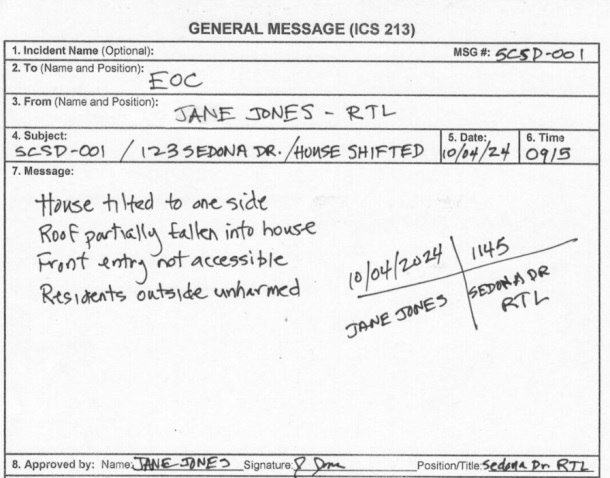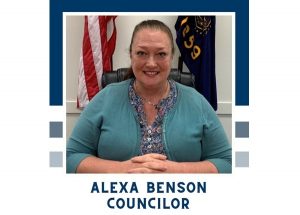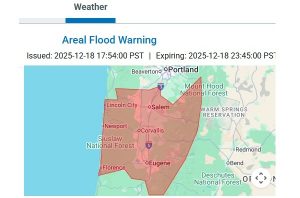CERTs add Pleasant Hill, Leaburg, Blue River to 5th annual exercise Oct. 18
5 min read
Presenter: No Emergency Operations Center? No problem. For its fifth annual exercise Oct. 18, our local Community Emergency Response Team once again will improvise, adapt, and overcome. For the Eugene Springfield CERTs, Andy Davis:
Andy Davis (Eugene Springfield CERT): We have a new emergency manager. Her name is Althea Sullivan, and she comes to us from Eugene Springfield Fire, so she’s trying to understand not only Springfield and Eugene CERT, but the Emergency Management office itself. We did not want her to have to do the Eugene EOC this year, so we were able to work with Springfield in an emergency, taking Eugene traffic for this exercise.
[00:00:45] Ken Vogeney, the emergency manager over at Springfield and the Emerald Amateur Radio Service (Springfield EARS—it’s a club for Springfield), and so they’re going to be taking the Eugene traffic and then in turn, we’ll simulate in another video net either to Eugene Fire or Eugene Police and pass that traffic, or hand-walk, hand-deliver the traffic to some facility in Eugene.
[00:01:14] A lot of those folks have just recently gone through the ARES (Amateur Radio Emergency Service) training, so they wanted to get some experience as well.
[00:01:22] Presenter: The exercises started in October 2021, the year after the Holiday Farm Fire, with an all-metro communications exercise that included neighborhood survey teams.
[00:01:32] In ’22, they trained with the Incident Command System general message form ICS 213, and in ’23, they customized it by noting the location within the neighborhood.
[00:01:43] In ’24, they added Winlink, which offers worldwide radio email over radio frequencies when the internet is not present. The email has ICS forms built in. They also simulated the lack of a city emergency operations center by activating their own.
[00:01:59] This year, they’re introducing another ICS form.
[00:02:03] Andy Davis (Eugene Springfield CERT): Yes, the (ICS) 205 is the Incident Radio Communication Plan, great resource. It puts down and everybody knows what channels or frequencies they’re using. You can have it ready at all times and when you have an incident, you can post it up someplace where it’s visible to everyone.
[00:02:20] Presenter: Andy also streamlined the paperwork, by adding annotations to the general message.
[00:02:25] Andy Davis (Eugene Springfield CERT): The first Thursday in October, I facilitated a training on ICS form ICS 213 and radio logs. In the past, we were having two physical copies of ICS 213s, one for being received, and then one physical copy of what they actually sent.
[00:02:45] So this year we’re just going to use one physical copy. The receiver would receive the message over the radio and fill out the ICS 213, and then they would log that receipt on the radio log.
[00:03:01] And then once it has been completed and sent, they put a service cross over to the right side of Block 7.
[00:03:09] In the top left corner of that cross, would be the date. The top right corner of that cross would be the time. The bottom left corner of that cross would be (in capital block letters) the name of the sender, and then the bottom right corner of that cross would be their position. It shows that, ‘Yes, I sent it and there’s the date and the time I sent it,’ and then you log it into your radio log that you sent that message.
[00:03:38] So it saves on rewriting paperwork and saves on time, cuts down the time on transmission of radio traffic, plus saves the trees.
[00:03:49] Presenter: Andy said the practice session in September went very well.
[00:03:52] Andy Davis (Eugene Springfield CERT): They stood up a radio service over at the Springfield EOCs, at the radio that they have there. So they were acting net control.
[00:04:03] And we also were able this year, for the dry run and also for the exercise on the 18th, Pleasant Hill was able to call in as a outlying community. Leaburg called in as an outlying community as well, to pass some radio traffic. We were working on trying to get Blue River. We also were able to bring in Lane County EOC (Emergency Operations Center) on the network. So all in all, that was pretty good.
[00:04:33] And it seemed also that things went a little bit smoother because of the past years of exercise. They’re understanding that they’re going to pass Block 2 through Block 8 and they’re actually saying ‘Block 2’ and then what’s in Block 2, and ‘Block 3’ and what’s in there, instead of just, you know, rattling off stuff and not saying where they’re at.
[00:04:55] A few folks did start off passing traffic fast, but net control did a great job. It came back and said, ‘Please speak slower.’ And so that was good. All in all, when we had a Zoom debrief, there was quite a few positive feedbacks, saying that it was a lot better this year and people were finally getting the hang of it, of how it goes.
[00:05:16] Presenter: Andy shared the schedule for Saturday morning.
[00:05:18] Andy Davis (Eugene Springfield CERT): The exercise starts at 10 a.m. on Saturday. That is the time that the Springfield EOC will actually come on the air and say they are the stand-in net control for the city of Eugene. We’ll be taking the traffic and we’ll eventually start doing a radio check for each of the district net controls prior to 10 a.m.
[00:05:46] We encourage neighborhood hams and district net controls and damage assessment teams in their area to complete their radio checks to make sure that their radios are functional. And also, if they happen to have radio traffic, (ICS) 213 (form)s completed to go ahead and start sending those, 213 radio traffics on up the line prior to 10 a.m., if they have it.
[00:06:13] But at 10 a.m. is the time where Springfield will say they are net control, and it goes till noon. And then at 1 p.m. we have the Zoom debrief from folks that participated.
[00:06:27] Presenter: The fifth annual all-metro exercise continues to build on skills practiced in previous years, and Andy says the team is ready.
[00:06:34] Andy Davis (Eugene Springfield CERT): Things are promising with Althea Sullivan as the EM (Emergency Manager), and working with Tiffany Brown as Lane County EM, they both have a wealth of knowledge and a wealth of experience dealing with emergencies and emergency preparedness.
And hopefully, in the future, working with both of them and also Ken Vogeney at Springfield, maybe work up even a better, more intensified exercise for next year, using each of those elements and bring that into the exercise. So hopefully all three of them and myself, we can get together and do some brainstorming for next year’s exercise.
[00:07:12] Presenter: Andy says there may still be time to volunteer for Saturday.
[00:07:15] Andy Davis (Eugene Springfield CERT): And of course, always, we desperately need people to volunteer in their neighborhoods for damage assessment teams. We can’t do much to help each other if we don’t have people that will report what they see, and call for help. We need more damage assessment teams and we need more ham radio volunteers to be neighborhood hams. Three ham radio operators within each district is not enough to cover all the people that live in that district.
[00:07:44] Presenter: To learn more and volunteer, visit the website for the Eugene Springfield CERT program, or volunteer for a damage assessment team through your neighborhood association.




